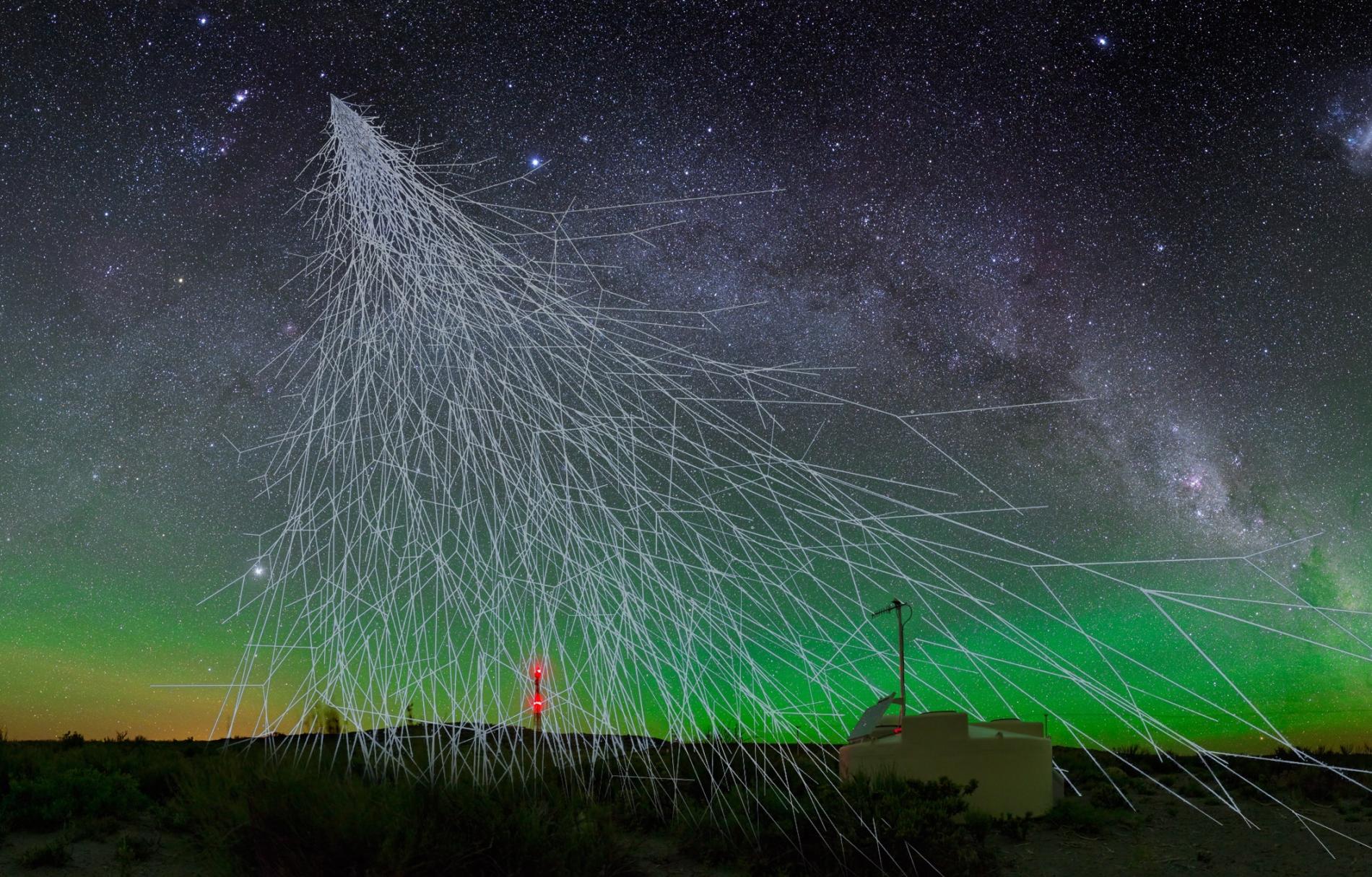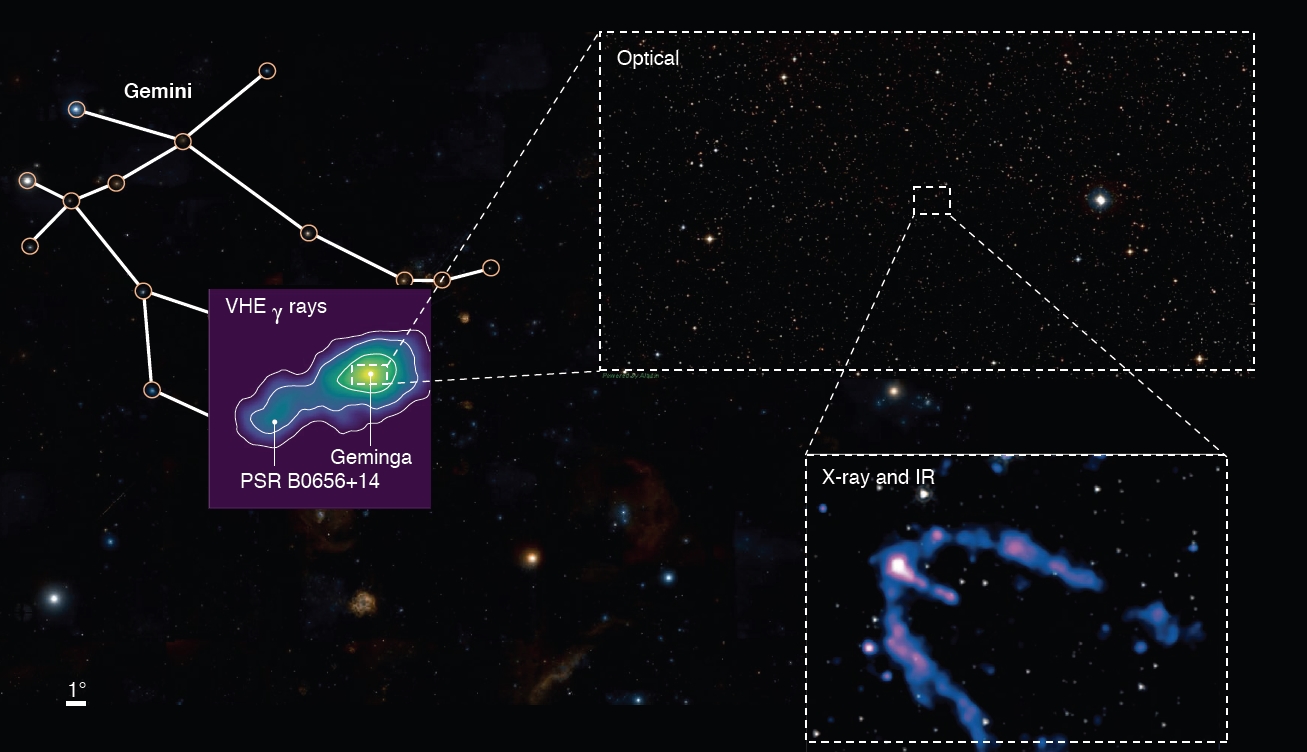Pulsars could hide one of the keys to understanding how cosmic rays travel
The Institute of Astrophysics of Andalusia (IAA-CSIC) leads a study that analyzes the role of gamma-ray halos around pulsars in order to understand how cosmic rays travel
Every day, tiny bits of matter traveling at nearly the speed of light collide with Earth's atmosphere, break down into other secondary particles, and "rain" down on the planet. Called cosmic rays, their origin, acceleration and propagation within our galaxy is one of the most pressing questions in astroparticle physics today. A study, headed by the Institute of Astrophysics of Andalusia (IAA-CSIC) that is published today in Nature Astronomy, analyzes the role that pulsars, very fast rotating neutron stars, can play in our understanding of how rays travel cosmic in the Milky Way.
Cosmic rays are mostly nuclei of atoms, especially hydrogen, but also electrons and other subatomic particles that can come from the Sun, from different sources within the Milky Way or even from other galaxies. Being electrically charged, they are deflected, like metal shavings swarming through a space dotted with magnets, by the various magnetic fields existing in our galaxy. Thus, their path varies so much that it is impossible to reconstruct their trajectory or determine their origin.

“Pulsars have played an essential role in the development of various areas of astrophysics, and for example the Crab Pulsar is the best known particle accelerator outside our Solar System”, says Rubén López-Coto, a researcher at the Institute of Astrophysics of Andalusia (IAA-CSIC) and the National Institute of Nuclear Physics (Padua, INFN), which is leading the work. “But just five years ago we were able to verify that these objects are surrounded by a gamma-ray halo that can help us understand how cosmic rays travel”.
Pulsars are a type of neutron star, objects barely twenty kilometers in diameter that result from the death of a very massive star (between eight and fifteen times the mass of the Sun): the star expels its envelope in a supernova explosion, the core remains converted into a neutron star and the envelope will form a structure, the supernova remnant, which will continue to expand. Pulsars stand out for their rapid rotation, up to hundreds of times per second, and because they emit a beam of light from both poles that, like a lighthouse, regularly crosses our line of sight.
"Pulsars, as they rotate, lose rotational energy through a wind of electrons and positrons that is created, accelerated and emanated from their magnetosphere -or the region where particles are affected by the pulsar's magnetic field-. This wind escapes and, when it encounters the supernova remnant, interacts with it; the particles are further accelerated and form what we know as the pulsar wind nebula or plerion", says Emma de Oña Wilhelmi, a researcher at DESY (Germany) involved in the work.
Plerions show different stages depending on the age of the pulsar. In young pulsars, less than ten thousand years old, a symmetric structure of concentric spheres is observed: the wind is highly compressed inside the supernova remnant, the electrons lose their energy inside it and do not escape. As time goes by, the remnant expands, the wind is no longer compressed and a more irregular structure is drawn, within which the particles are nevertheless still confined. But after a hundred thousand years, electrons and positrons begin to escape from the plerion and propagate freely through the interstellar medium.
“Until 2017, it was not well known what happened to the plerions of these old pulsars. The study of two of them showed a very extensive and energetic emission, the gamma-ray halo of pulsars, which would be produced by the collision of accelerated electrons and positrons with light from other sources, whose energy amounts to teraelectronvolts. Thus, we saw that the particles from the magnetosphere of the pulsars are injected into the environment and propagate forming part of what is known as galactic cosmic rays”, points out Rubén López-Coto (IAA-CSIC).

This study showed, given the size of the halo of one of the pulsars, that positrons emerging from its halo rarely reach Earth, and that the detected excess of positrons and attributed to pulsars must come from more exotic sources. Furthermore, it revealed that the rate of diffusion of these particles, which should be the same as that inferred for cosmic rays within the galaxy, was about a hundred times lower than this. “The gamma-ray halos of pulsars thus take on a prominent place for the study of cosmic ray propagation, and an exciting new field of study around pulsars in which questions remain open”, concludes Rubén López- Preserve (IAA-CSIC / INFN).
R. López-Coto et al. "Gamma-ray halos around pulsars as the key to understanding cosmic-ray transport in the Galaxy". Nature Astronomy, 14 Feb 2022.
Instituto de Astrofísica de Andalucía (IAA-CSIC)
Unidad de Divulgación y Comunicación
Silbia López de Lacalle - sll[arroba]iaa.es - 958230676
https://www.iaa.csic.es
https://divulgacion.iaa.csic.es

